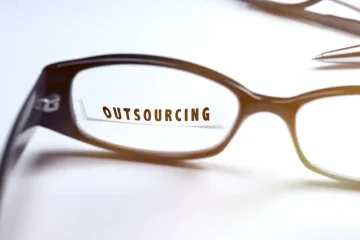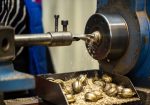Palm Oil Startup Success: Equipment Budgeting for First-Time Entrepreneurs

Starting a palm oil processing business can be a lucrative venture, especially in regions where oil palm is abundantly grown. However, many first-time entrepreneurs face the challenge of balancing startup costs with equipment quality, often unsure where to save and where to invest. The right budgeting strategy can make the difference between long-term success and costly operational setbacks.
This article offers practical guidance on equipment budgeting for new entrants in the palm oil industry. We’ll explore how to prioritize key investments, avoid common mistakes, and work effectively with a reliable food processing equipment supplier to ensure your capital goes further without compromising on quality. Whether you’re launching a small-scale mill or planning to scale up in phases, this roadmap is designed to help you build a strong, sustainable foundation.
Why Equipment Budgeting Matters in Palm Oil Startups
Unlike trading or service-based businesses, palm oil production requires significant capital expenditure (CAPEX) up front, especially in the form of palm oil milling equipment. The startup phase involves not just purchasing machines, but also preparing infrastructure, power supply, and labor training.
If too much is spent on underperforming or incompatible machines, future cash flow may suffer. On the other hand, compromising too much on quality can lead to frequent breakdowns, poor oil yield, and high operating costs.
A smart budget focuses on value, not just price.
Step 1: Define Your Business Scale and Output Goals
Your budget starts with understanding how much fresh fruit bunch (FFB) you expect to process daily.
| Business Type | Daily Capacity | Suggested Budget |
| Micro/Small | 0.5–2 tons/day | $30,000 – $80,000 |
| Medium | 5–10 tons/day | $100,000 – $300,000 |
| Large/Industrial | 15+ tons/day | $500,000+ |
Avoid oversizing your equipment during the startup phase. Start small, validate your supply chain and customer base, then upgrade in stages.
Step 2: Identify Core Equipment You Must Invest In
Every palm oil mill requires a core set of machinery to handle fruit sterilization, oil extraction, and clarification.
Essential Palm Oil Milling Equipment:
| Equipment | Function |
| Sterilizer | Boils fruit to deactivate enzymes and ease separation |
| Fruit Thresher | Separates palm fruit from bunches |
| Digester | Mashes the fruit for efficient oil release |
| Screw Press | Extracts crude palm oil from digested pulp |
| Clarification Tank | Removes water and impurities from the oil |
These machines are non-negotiable. While you may choose different sizes or levels of automation, skipping or under-investing in any of them can compromise the entire operation.
Work closely with a trusted food processing equipment supplier to select machines tailored to your scale and power availability.
Step 3: Consider Secondary and Optional Equipment
To reduce startup costs, it’s okay to postpone some investments—provided they don’t affect safety or compliance.
Optional Add-ons (Phase 2 or Later):
Nut and fiber separator (for palm kernel recovery)
Boiler system (for energy generation, if not available externally)
Effluent treatment plant (can be phased in depending on regulations
Packaging machines (if planning downstream retail sales)
You can start with manual or semi-automatic options for some processes and upgrade as your profits grow.
Step 4: Budget for More Than Just Machines
Entrepreneurs often make the mistake of allocating 100% of their capital to machinery. However, setting up a working palm oil mill requires:
| Cost Category | Estimated Share of Budget |
| Machinery | 50–60% |
| Civil works (buildings, foundation) | 15–20% |
| Electrical & piping systems | 5–10% |
| Installation & training | 5–8% |
| Spare parts & tools | 3–5% |
| Working capital (raw materials, labor) | 10–15% |
Plan holistically. Underbudgeting for installation, labor, or power systems can delay your launch even if machines are already delivered.
Step 5: Choose the Right Equipment Partner
A reliable food processing equipment supplier will not only sell machines but also guide you on layout planning, utility requirements, and operational training.
When evaluating suppliers of palm oil milling equipment, ask:
Do they offer warranty and after-sales support?
Can they provide installation assistance or turnkey services?
Do they have experience with your region’s infrastructure challenges?
Can they supply spare parts quickly and affordably?
Avoid buying from anonymous online vendors offering rock-bottom prices but no support. In the palm oil business, service quality matters as much as machinery quality.
Step 6: Consider Financing and Phased Investment
If your startup budget is tight, explore financing options:
Lease-to-own plans from suppliers
Agricultural development loans from banks or cooperatives
Government grants for agro-processing equipment
Alternatively, begin with a modular plant design, allowing you to install base machinery first and gradually add more components. This phased approach minimizes risk while enabling growth.
Step 7: Track ROI Metrics and Break-Even Timeline
Always keep your eye on the numbers. A simple break-even calculation can guide your spending decisions.
Example (5 TPH Mini Mill):
Daily input: 100 tons FFB
Yield: 20% = 20 tons crude palm oil/day
CPO Price: $800/ton
Daily revenue: $16,000
Daily expenses: $6,000
Daily net profit: $10,000
Equipment cost: $250,000
Break-even in ~25 working days, under ideal conditions.
Tracking performance against projections will also show when it’s time to reinvest and scale up.
Conclusion
For first-time entrepreneurs, launching a palm oil processing business requires not only ambition but smart financial planning. By prioritizing critical palm oil milling equipment, budgeting beyond just machinery costs, and working with an experienced food processing equipment supplier, you can build a solid, scalable business from day one.
Remember: your first investment sets the tone for future growth. Choose quality where it matters most, plan for expansion, and don’t hesitate to start small and build smart.





















